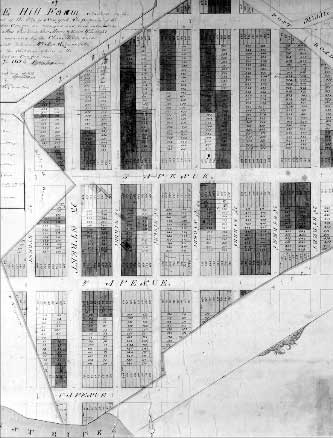

As New York expanded north in the early nineteenth century, the Common Council deemed it necessary to manage growth through the imposition of a formal street plan upon the island of Manhattan. In 1811, a special commission completed a plan that laid down a grid of numbered streets and avenues that was considered the most practical method to facilitate the orderly development of the city.
In 1812, shortly after the street grid was planned for New York, the heirs of the late Nicholas Cruger divided Rose Hill. In a scene that would be repeated throughout the history of New York real estate, Cruger's children went to court to force his widow Ann, who remarried in 1801, to divide the farm according to their father's will. Nicholas Cruger left one-third of Rose Hill to Ann, who was his second wife, and two-thirds of the farm to the eight children he had with both Ann and his first wife. After a court ruling Rose Hill was surveyed and divided. A map drawn up by the surveyor showed the newly planned street grid laid over the entire property and divided the farmland into city blocks. Each block was divided into lots, creating a total of 1,010 individual lots that were divided among eight groups of Cruger heirs. The family members were then free to sell their Manhattan real estate.